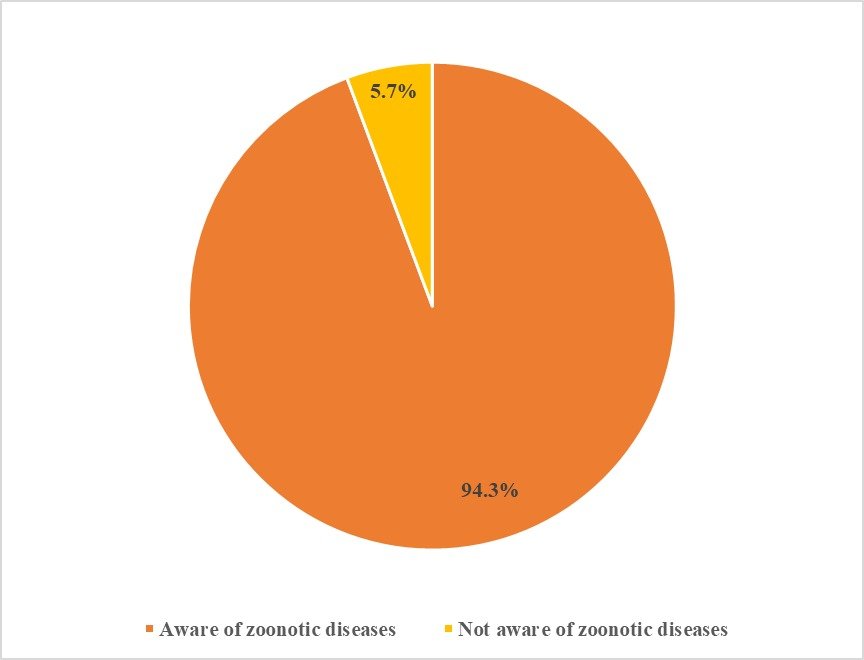Analysis of the Awareness, Perception, and Adoption of Biosecurity Measures by Slaughterhouse Workers in Koinadugu District, Sierra Leone
Keywords:
Adoption, Awareness, Biosecurity Measures, Slaughterhouse, Zoonotic Disease.Abstract
Slaughterhouse workers are more susceptible to zoonotic disease infections from cuts and bloodletting, spreading blood-borne pathogens to societies. Adopting biosecurity measures by slaughterhouse workers in their daily tasks can lower the risk of spreading zoonotic diseases while improving food safety. This study aims to examine slaughterhouse workers' awareness of biosecurity, their perception of the efficiency of biosecurity measures in reducing zoonotic infections, and, most crucially, their adoption of such measures. The research was carried out in Sierra Leone's Northern Province's Koinadugu district. A total of 18 slaughterhouses were randomly selected in six chiefdoms of the Koinadugu district. A semi-structured questionnaire was used to survey 87 slaughterhouse workers in the 18 slaughterhouses selected in the six chiefdoms. The data were analyzed using Microsoft Excel version 2016 software. Results show that most slaughterhouse workers (87.4%) are well aware of biosecurity measures. They perceived cleaning and disinfecting the materials and equipment used in the slaughterhouse (x̄ = 4.43), as well as the workplace itself (x̄ = 4.33), and receiving proper training (x̄ = 4.33) as crucial biosecurity measures. The results also reveal little use of personal protective equipment by slaughterhouse workers (27%). There is low adoption of biosecurity measures by slaughterhouse workers in the district. Corruption and inadequate funding of relevant institutions affect the enforcement of biosecurity legislation in the district. Therefore, education and training programs can improve slaughterhouse workers' knowledge and understanding of biosecurity measures. Also, good governance should be fostered at all institutional levels to increase the effectiveness and efficiency of public sector service delivery.
Downloads

Published
How to Cite
Issue
Section
Copyright (c) 2022 Authors

This work is licensed under a Creative Commons Attribution-NonCommercial 4.0 International License.








